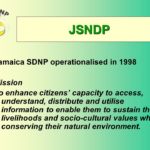DGG received a request from RBAP to provide inputs on the above. The Director of RBAP is going on mission to Afghanistan and is planning to make a pitch to the CO supporting this.
Here are the inputs provided.
1. A digital copy of our report on mobile technologies is attached – the report is also available here: https://www.undpegov.org/mgov-primer.html. The report makes the case that development practitioners who really want to harness ICTs for development need to focus more on mobile technologies which nowadays are in the hands of almost 6 billion people, over 50% of them in the Asia Pacific region
2. We have just completed a short case study on the A2I programme which we did in collaboration with the CO. The case study presents in brief format the various aspects of the project including impact on the ground and emerging challenges. While clearly Afghanistan is not Bangladesh by any means, some of the programmatic lessons can be very useful for the CO in Kabul. The case study is also available on line here: https://www.undpegov.org/node/2741
3. An additional attachment is a report on several case studies on e-governance and access to information which also includes Bangladesh. The report makes a direct link to the political economy situation in the countries study and uses that to assess implementation and some of the resulting challenges -and failures too.
4. In terms of Afghanistan, 2011 data indicate that while only 5% of the population has access to the Internet (or 1.8% of households, very similar to Bangladesh) close to 55% do have access to a mobile device (and this ratio is just slightly lower to Bangladesh’s 59%). This in itself is an opportunity to do ICT for development and e-governance in an innovative fashion.
5. This brings us to the talking points requested:
5.1 Bangladesh’s success in using ICTs to tackle long-standing poverty and governance issues shows to the world that LDCs are also capable of effectively harnessing modern technologies if the focus of attention is heavily placed on development issues and not on technologies alone. By bringing together strong political will, a visionary approach to the future of the country, a synchronized effort across public institutions, a concerted national capacity development strategy and strategic support from UNDP, Bangladesh is now providing more effective public services to poor sectors of the population while promoting access to information via ICTs for many of its citizens.
5.2. Like other countries that have succeeded undertaking similar programmes, Bangladesh made sure from the very start that the strategic priorities of Digital Bangladesh were part and parcel of the national development agenda and supported Internationally-agreed Development goals. This is a step that most countries usually chose to ignore, step that can make a difference when it comes to success and failure.
5.3 While certainly Afghanistan’s political and socio-economic situation is no the same as Bangladesh -and we should keep this constantly in mind, penetration rates for Internet access and mobile subscribers are similar. The former stands at roughly at 5% the latter is 11 times larger, of 55% in Afghanistan (59% in Bangladesh). Being aware of this apparently very basic statistic should give policy makers and ICT for development practitioners a strong hint as to where the emphasis should be placed when it comes to which technologies to privilege.
5.4 Another critical lesson from Bangladesh was the concerted effort to move beyond central government and directly involve local governments and municipalities. The deployment of over 1,000 union information service centers (UISCs, 3,500 more under way) was what enable the programme’s capacity to reach many of the poor and under-served communities and offer not connectivity but rather access to public services, public documents and public information on government institutions. Actually, our own local governance programme here in Afghanistan has started to do something similar on a smaller scale. In any event, such ongoing programme can provide one of the backbones in the country to launch an e-governance programme similar to that of Bangladesh.
5.5 Bangladesh has also yielded a series of lessons learned that UNDP has captured. Innovations such as quick wins and partnerships with non-traditional organizations also made a critical difference there and allow the programme, which was started in 2006, to launch a 2nd phase last year and ensure funding of over 30 million dollars from various donors and partners.
Cheers, Raúl





